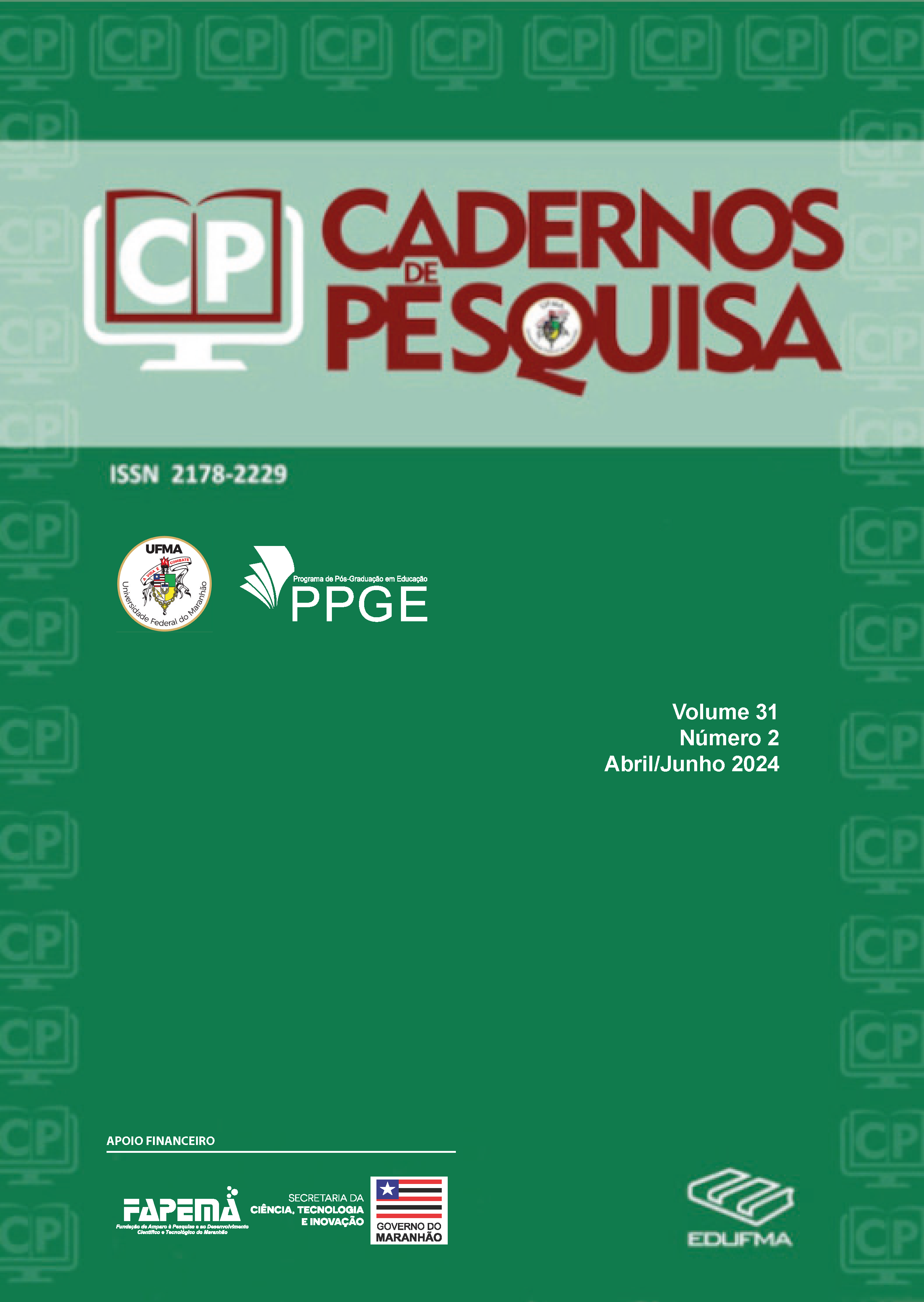Políticas chinesas de compreensão internacional e internacionalização do ensino superior (IES):
o exemplo da Universidade de Yunnan (final do século XX e início do século XXI)
DOI:
https://doi.org/10.18764/2178-2229v31n2.2024.36Palavras-chave:
Internacionalização do ensino superior, China, Mobilidade internacional, Estudantes chinesesResumo
As questões levantadas por nosso artigo são as seguintes: como uma universidade chinesa se encaixa nas políticas nacionais e regionais de internacionalização do ensino superior e mobilidade estudantil? Como ela está agora em posição de afirmar suas características específicas e, se necessário, demonstrar sua autonomia? Atualmente, a política de Internacionalização do Ensino Superior da China e seu incentivo à mobilidade internacional de estudantes fazem parte de uma política educacional geral que tem cinco componentes: o desejo de manter a soberania educacional da China, reduzir as desigualdades entre as regiões, dar
preferência às ciências “duras”, buscar um melhor equilíbrio entre o envio de estudantes para o exterior e o
recebimento de estudantes estrangeiros e manter um forte compromisso com as sociedades ocidentais. O artigo começa analisando o nível macro (governo central) a partir da década de 1980 (a “nova era”). As regiões estão desenvolvendo políticas específicas para a internacionalização, especialmente oferecendo condições
favoráveis para estudantes estrangeiros e para chineses que retornam do exterior após a obtenção de um diploma. Apresentamos (em nível meso) o exemplo da região de Yunnan (sudeste da China). A terceira parte é dedicada à investigação da internacionalização do ensino superior e da política de mobilidade estudantil no nível de uma universidade em particular: a Universidade de Yunnan (nível micro). O principal método utilizado é uma síntese de textos chineses não conhecidos fora do país e a análise de conteúdo de documentos e sites oficiais de políticas em três níveis: governo central, uma região e uma universidade.
Downloads
Referências
BENNETT, Milton James. Towards Ethnorelativism : A Developmental Model of Intercultural Sensitivity. In: PAIGE, R.Michael. (Org.) Cross-cultural Orientation: New Conceptualizations and Applications. New York: University Press of America, 1986, p. 27-70.
CHENG, Xi. Le développement de la politique sur l’élection des étudiants pour l’études à l’étranger depuis la Réforme et l’Ouverture (改革开放以来中国政府选派留学生的政策沿革). Overseas Chinese History Studies, Beijing, n.1, 1999. p. 37-44.
COSNEFROY, Laurent. L’impact de l’internationalisation sur les étudiants. In: COSNEFROY, L., DE KETELE; Jean-Marie; HUGONNIER, Bernard. et al. (Orgs.) L’internationalisation de l’enseignement supérieur. Bruxelles : De Boeck, 2020. p.127-154.
CUI, Yan Qiang ; LI, Yu Mei. Internationalization of Universities in the Context of the Belt and Road Initiative. Journal of Teacher Education, Chongqing, n.1, 2019. p. 83-91.
DE WIT, Hans; HUNTER, F. The future of internationalization of higher education in Europe. International Higher Education, Boston, n. 83, 2015. p. 3.
DRUCKER, Peter Ferdinand. The Age of Discontinuity. 1. éd. New York : Harper and Row, 1969.
HUGONNIER, Bernard. Stratégies et politiques des Etats en matière d’Internationalisation de l’Enseignement supérieur In: COSNEFROY, Laurent ; DE KETELE, Jean-Marie ; HUGONNIER, Bernard et al. (Orgs.) L’internationalisation de l’enseignement supérieur. Bruxelles : De Boeck, 2020. p. 5- 60.
KNIGHT, Jane. Updated Definition of Internationalization. International Higher Education. Boston, n° 33, 2003. p. 2-3.
LEFEBURE, Alessia. Les universités chinoises vont-elles quitter les classements internationaux ? The Conversation. https://theconversation.com/les-universites-chinoises-vont-elles-quitter-les-classements-internationaux-183151. Acessado em 1 de outubro de 2023.
Ministry of Education of the People’s Republic of China. 80.786 em Pequim, 61.400 em Xangai, 45.778 em Jiangsu, 38.190 em Zhejiang, 27.879 em Liaoning, 23.691 em Tianjin, 22.034 em Guangdong, 21.371 em Hubei, 19.311 em Yunnan e 19.078 em Shandong. http://www.moe.gov.cn/jyb_xwfb/gzdt_gzdt/s5987/201904/t20190412_377692.html. Acessado em 7 de outubro de 2023.
National Bureau of Statistics of China (2017) [online]. Disponível em http://data.stats.gov.cn/easyquery.htm?cn=C01. Acessado em 23 de setembro de 2023.
NKAKE, Lucie Mamie Noor. L’éducation à la compréhension internationale. 1. éd. Genève : BIE, 1996.
NYE, Joseph S. Soft Power and Higher Education. In: Forum for the Future of Higher Education (Arquivos), p.11-14, 2005.
Office of international Cooperation and Exchange. http://jlc.peuni.cn/info/1100/1179.htm. Acesso em 1 de outubro de 2023.
ROUIAÏ, Nashidil. Nouvelles routes de la soie, Belt and road initiative. [S.l]: Geoconfluences, 2018. Disponivel em : http://geoconfluences.ens-lyon.fr/glossaire/routes-de-la-soie. Acessado em 13 de setembro 2023.
RUI Yang. China’s Strategy for the Internationalization of Higher Education: An Overview. Frontiers of Education in China, Beijing, n.2, 2014. p. 151-162.
SODERQVIST, Minna. Internationalization and its management at higher-education institutions: Applying conceptual, content and discourse analysis. 1. éd. Helsinki: Helsinki School of Economics, 2002.
South & Southeast Asian University Network. http://www.sseaun.ynu.edu.cn/2017-11/27/c_679482.htm. Acessado em 16 de outubro de 2023.
STETAR, Joseph. et al. Soft Power Strategies: Competition and Cooperation in a Globalized System of Higher Education. In: PORTNOI, Laura. M. et al. (Orgs.) Higher Education, Policy, and the Global Competition Phenomenon. New York: Palgrave Macmillan US, 2010. p.191-203.
TEODORO, A. Conclusion. In: Contesting the global development of sustainable and inclusive education. 1. éd. New York : Routledge, 2020. p. 106 -110.
TEODORO, Antonio. The University as Contested Field: Sketching Possible Futures. In: Contesting the Global Development of Sustainable and Inclusive Education, New York : Routledge, 2020. p. 78-95.
UNESCO. Education à la citoyenneté mondiale. L’approche de l’UNESCO [online]. Disponível em org/new/fileadmin/MULTIMEDIA/HQ/ED/pdf/questions-answers-21jan-FR.pdf. 2015. Acessado em 26 de outubro de 2023.
UVALIC-TRUMBIC, Stamenka. Les moyens de l’internationalisation. In: COSNEFROY, Laurent ; DE KETELE, Jean-Marie ; HUGONNIER, Bernard et al. (Orgs.) L’internationalisation de l’enseignement supérieur. Bruxelles : De Boeck, 2020. p. 61-87.
VAN DER WENDE, Marijk. Internationalization of Higher Education in the OECD Countries: Challenges and Opportunities for the Coming Decade. Journal of Studies in International Education, New York, n. 11, 2007. p.274-289.
VERGER, Jacques. La mobilité étudiante au Moyen-Age. Histoire de l’éducation, n.50, avril.1991. p. 65-90.
WANG, Li Juan et al. Research on the Policy Support System of Higher Education Internationalization in Yunnan Province under the “Bridgehead” Strategy. China Management Informationization. Changchun ,n.4, 2015. p. 234-235.
Xinhua News [online]. Disponível em http://www.xinhuanet.com/2018-04/17/c_1122697495.htm. Acessado em 23 de setembro de 2023.
Downloads
Publicado
Como Citar
Edição
Seção
Licença

Este trabalho está licenciado sob uma licença Creative Commons Attribution 4.0 International License.
A Cadernos de Pesquisa está licenciada com uma Licença Creative Commons Atribuição 4.0 Internacional.




















